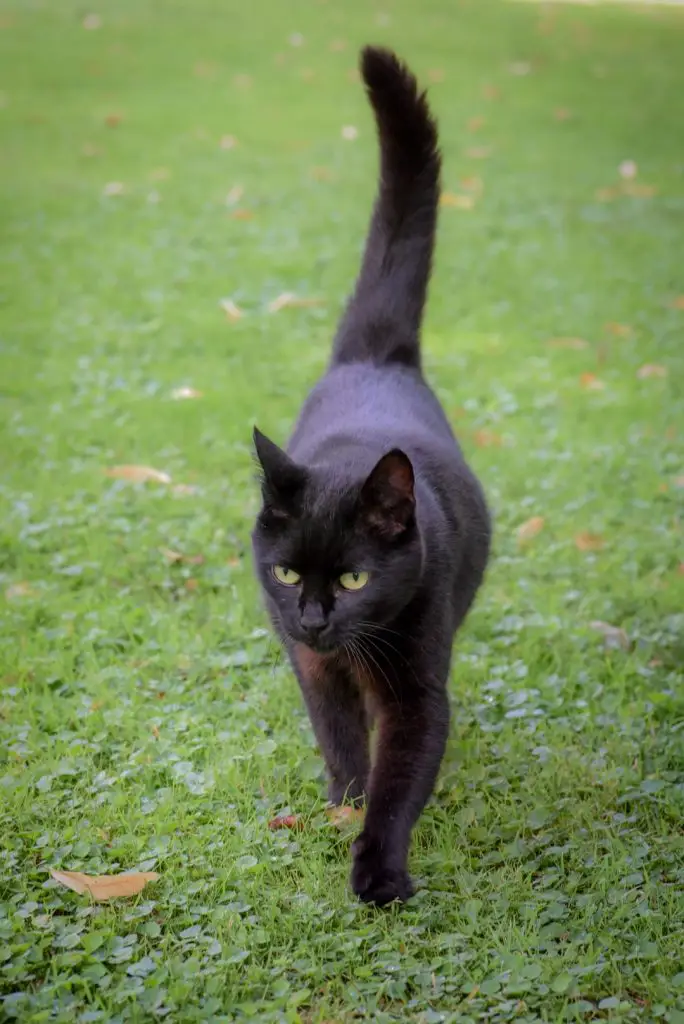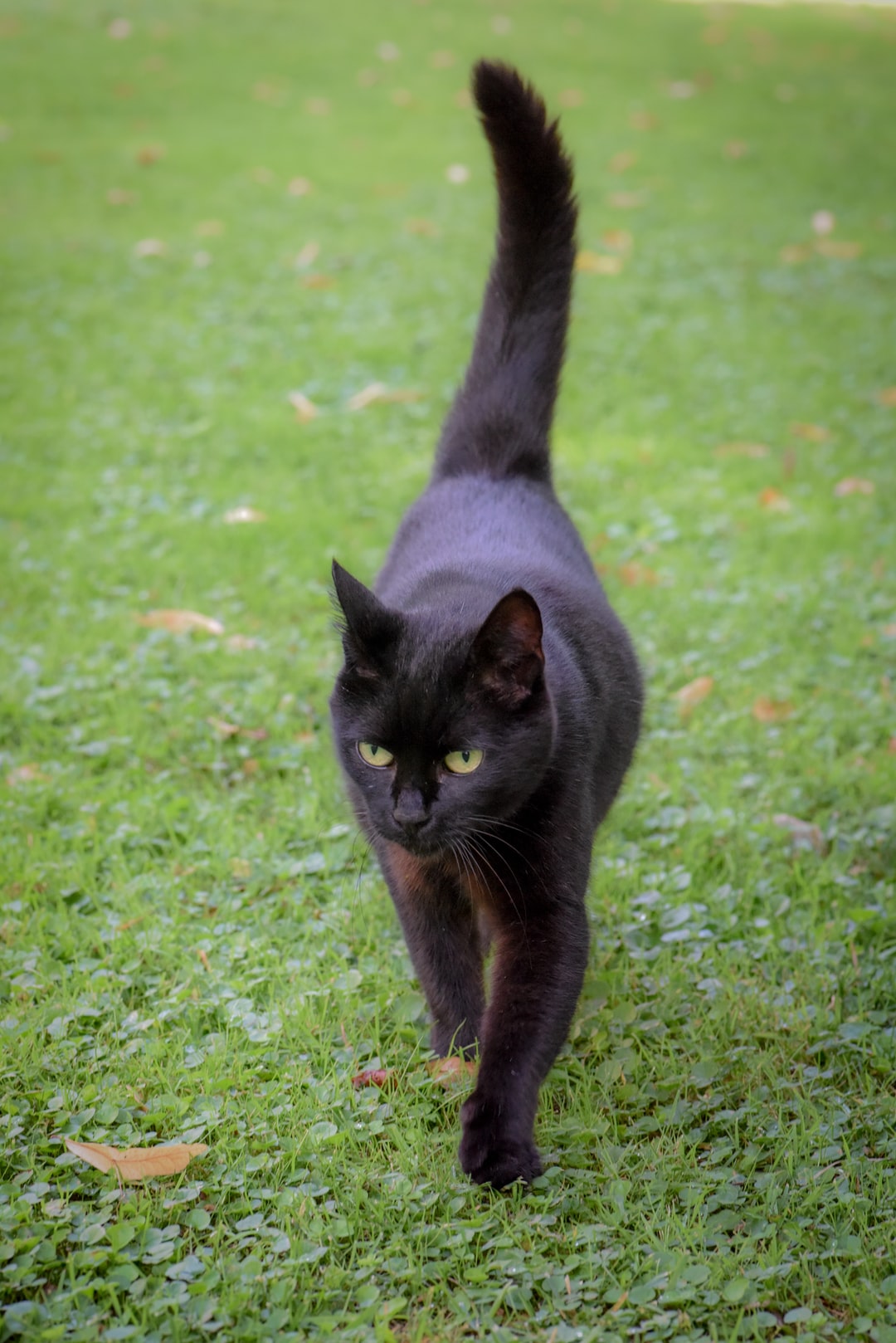If you’re part of the 25.4% of Americans who own cats, then you may also be wondering what it means when your cat wags their tail. Does it mean they’re happy and confident, or sad and angry? Can it mean both? What are the signs of a happy cat? Find out why do cats wag their tails…keep reading
The more you understand your cat’s tail wags, the more you can give them what they need. Continue reading to learn all about the different types of positions and movements your cat’s tail can have.

Contents
Tail Position
A cat’s tail position can tell you a lot about its mood. According to veterinarians and behavioral specialists, cats have seven core moods. Noticing signals from their tails can help you figure out which mood your cat is in at any given moment.
Held High
If your cat walks into the room with its tail held high up in the air, it can mean that they’re feeling happy and confident. Most of the time, this will happen when your cat is feeling comfortable in its own space. You can feel good about knowing that you’ve made a cozy home for your cats.
This could be a great time to introduce your cat to others. This held high position makes it more likely that they will be friendly and more inclined to socialize with family members and guests. If your cat approaches you with its tail proudly high in the sky, this is a good time to pet them or play with them.
Curved
Another version of the held high position is the curved position. When your cat has a slight curve at the tip of the tail that resembles a question mark, it can also mean they are feeling happy and confident.
A curved tail is a sign that your cat is feeling playful or frisky. This would be a great time to bring out their favorite toys and play! Interacting with your cat when their tail is curved shows them affection and love and strengthens your bond.
Held Down
A cat that is holding its tail toward the floor can showcase a more aggressive or serious mood. This can happen if they sense a stranger in their home or if they are moved from their comfortable space to a place unknown to them.
They may also feel threatened or nervous if there is another strange animal near them. If you see your cat’s tail in this position, it is not a great time to approach them but instead offer them a comforting space where they can hide away until they feel better.
Tucked
You will also notice that sometimes your cat tucks its tail in between its hind legs. Similar to being held down, this is not a sign that your cat is feeling happy or confident.
When your cat tucks its tail it likely means that your cat is feeling anxious or nervous. This is a sign that they’re uncomfortable with the situation at hand. By tucking their tail, they are protecting themselves in case of any surprise or sudden movements.
Puffed
It’s also important to note that sometimes your cat will puff its tail. This could mean different things depending on the position and movement of the puffed tail.
For example, if your cat’s tail is puffed and held high, it can mean your cat is feeling happy. However, if your cat’s tail is puffed and held down, it can mean the opposite. It’s important to study the behavior of your cat to understand what a puffed tail could mean.
Tail Movement
Just like you can tell your cat’s mood by the position of its tail, you can also gather signals from the movement of your cat’s tail. Depending on the type of movement your cat’s tail makes, you should either stay away or interact.
Swishing
You may notice your cat swishing its tail from side to side along the floor every once in a while. This could mean they are focused on a specific object. This happens most often during playtime and can mean a pounce is coming.
However, sometimes a swishing tail can also be a sign of aggression. A trick is to check their ears to see if they’re flattened. If so, this could be a sign they are irritated or nervous.
Wrapped
A wrapped tail around a person or an object is a good sign! This could be a sign of trust and friendship. However, if wrapped around its own body, your cat could be on alert or possibly feel sick.
Tapping
Tapping of the tail is a sign that your cat is relaxed. You may even notice tail taps while your cat is sleeping. This is a sign that your cat is feeling peaceful.
Situational Wagging
Sometimes your cat will wag its tail during certain situations. During these times, the wagging can vary and change depending on the situation. There are two main situations in which your cat will wag its tail.
Hunting
Hunting is natural and instinctive to your cat. Sometimes this wag can be energetic or a persistent tap or thump. You may notice this when your cat is peering out the window at birds or animals.
You may also notice this happen inside of your house when your cat sees a bug or something move. A cat’s tail helps with balance and agility, so it’s very common to move when your cat is in hunt mode.
Happy or Confident
If you’re wondering how to tell if your cat is happy, it more often than not is related to tail wagging. A cat will wag its tail when feeling happy or confident. Be sure to notice the type of position and movement your cat’s tail makes while it wags to be sure they are in a good mood.
Cats Who Wag Their Tails
As everyone knows, cats are their own individuals. It can take time to learn and understand the behavior of your cat. With these guidelines in mind, you can figure out if your cat is happy and confident or if they’re reacting out of fear or stress.
Once you know your cat’s mood, you are in a better place to navigate how you can help them. For more information about cats, visit our blog today!
Now that you have read our article Why Do Cats wag their tails, don’t forget to visit us on your favorite social media pages. Don’t forget to share our article so others can learn and enjoy.



